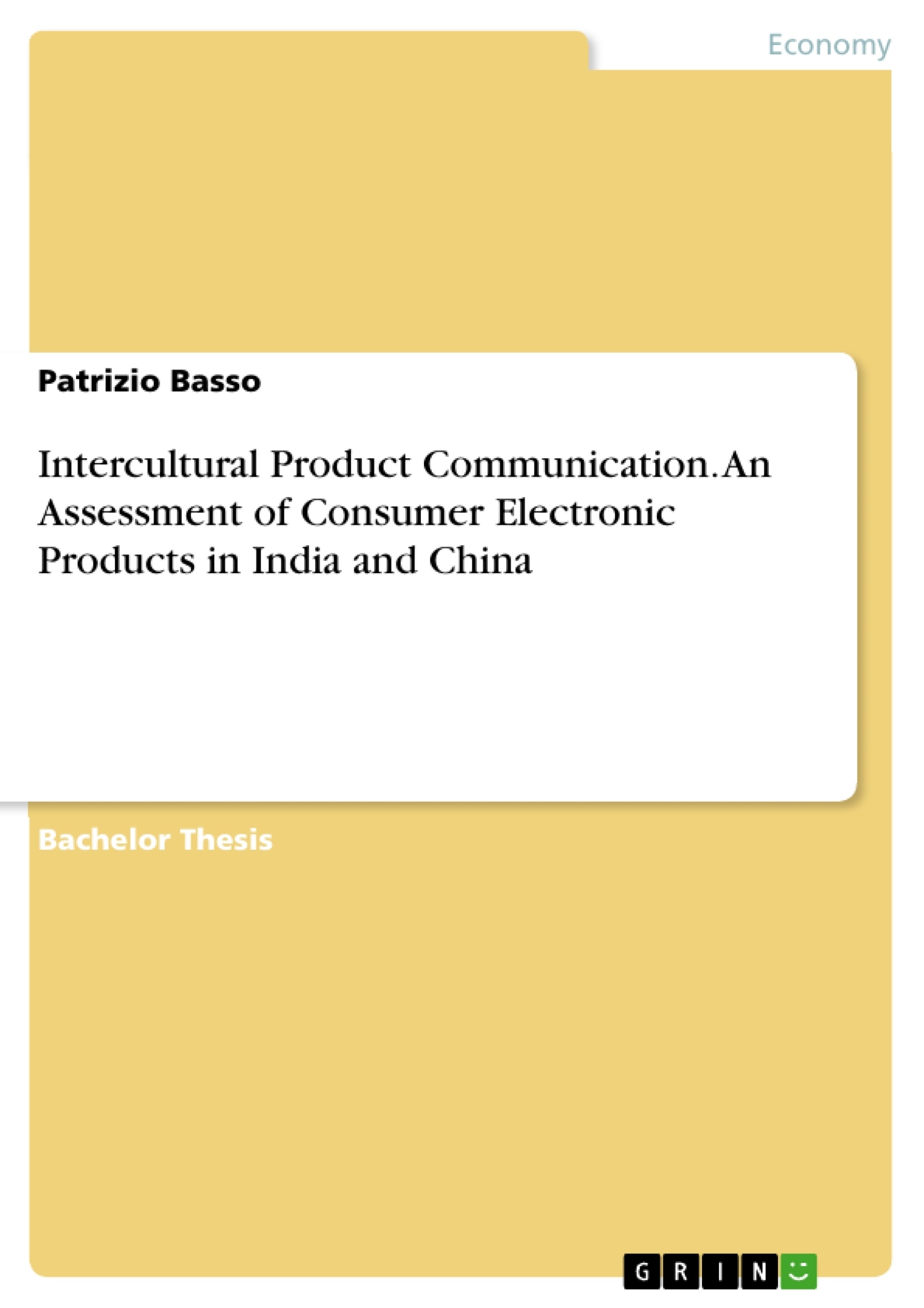The thesis examines the product communication in consideration of different cultural circumstances and the development of cultural adaption. First, it outlines the general problem, which international and global action organizations have by facing foreign cultures. The problems guide inevitable to the relevance for economy and the mentioned organizations. Due to the work with and for human beings, also limitations are topic.
The study also examines the product communication, as part of the marketing mix and under reflection of the pressure triangle. Then, the focus will be set on the cultures, as well as the specific markets in India and China.
The thesis illustrates the intercultural product communication based on the observations of the companies Sony, Microsoft, Samsung and Apple. Their products PS4, Xbox One, Galaxy S6 Edge+ and IPhone 6S Plus, will be referred to each core strategy and the cultural characteristics in China respectively India.
Once one has been to the USA, Italy, Germany, other foreign countries or even China or India, one travels with subconscious stereotypes and prejudices. In consequence of educational background, advertisement, friends and other influences cultural imaginations originate without doing it willful. Now to fit the real cultural requirements one has to study the culture in detail.
Inhaltsverzeichnis (Table of Contents)
- Introduction
- Problem Discussion
- Practical Relevance
- Limitation of Research
- Product Communication
- As Part of the Marketing Mix
- Pressure Triangle – Effectivity, Innovation, Costs
- Influences of cultural differences on product communication
- General difficulties global acting companies have to face
- China
- Culture
- Market, Competitors, Demand
- India
- Culture
- Market, Competitors, Demand
- Case Example of Intercultural Product Communication
- Sony
- Core Strategy
- Implementation on PlayStation 4
- Cultural Characteristics of Product Communication on Chinese Market
- Microsoft
- Core Strategy
- Implementation on Xbox One
- Cultural Characteristics of Product Communication on Chinese Market
- Samsung
- Core Strategy
- Implementation on Galaxy S6 Edge+
- Cultural Characteristics of Product Communication on Indian Market
- Apple
- Core Strategy
- Implementation on iPhone 6S Plus
- Cultural Characteristics of Product Communication on Indian Market
- Comparison of Facts and Figures
- Results Critical Discussion - Recommendation
Zielsetzung und Themenschwerpunkte (Objectives and Key Themes)
This thesis examines the challenges international and global companies face when adapting their product communication strategies to different cultural contexts. It focuses on the impact of cultural differences on product communication, particularly in the context of India and China, analyzing the case studies of Sony, Microsoft, Samsung, and Apple. The aim is to provide insights into the strategies these companies use to cater to the specific needs and expectations of consumers in these diverse markets.
- Intercultural product communication
- Cultural differences in product communication
- Case studies of Sony, Microsoft, Samsung, and Apple
- Product communication strategies in India and China
- Cultural adaption for global organizations
Zusammenfassung der Kapitel (Chapter Summaries)
- Introduction: This chapter introduces the general problem of cultural adaptation for global organizations, emphasizing the importance of understanding cultural nuances in communication for successful marketing.
- Product Communication: This chapter defines product communication as a key component of the marketing mix and discusses the "Pressure Triangle" which balances effectiveness, innovation, and cost in communication strategies.
- Influences of cultural differences on product communication: This chapter focuses on the cultural differences in India and China, examining their specific market dynamics and consumer behavior.
- Case Example of Intercultural Product Communication: This chapter analyzes the product communication strategies employed by Sony, Microsoft, Samsung, and Apple for their respective products, PlayStation 4, Xbox One, Galaxy S6 Edge+, and iPhone 6S Plus, in the Chinese and Indian markets. It highlights the cultural characteristics of their campaigns, including the adaptation of communication styles and content to resonate with local audiences.
Schlüsselwörter (Keywords)
The main keywords of this thesis are: intercultural communication, product communication, cultural differences, global marketing, market adaptation, consumer behavior, case studies, Sony, Microsoft, Samsung, Apple, PlayStation 4, Xbox One, Galaxy S6 Edge+, iPhone 6S Plus, India, China.
- Arbeit zitieren
- Patrizio Basso (Autor:in), 2016, Intercultural Product Communication. An Assessment of Consumer Electronic Products in India and China, München, GRIN Verlag, https://www.grin.com/document/380879



